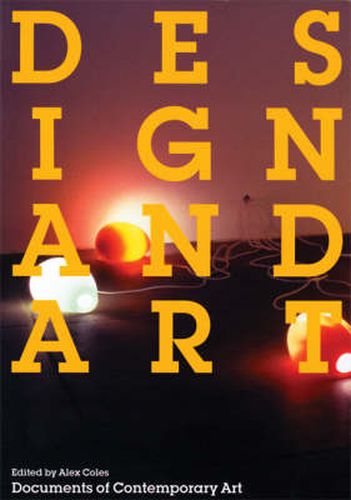Readings Newsletter
Become a Readings Member to make your shopping experience even easier.
Sign in or sign up for free!
You’re not far away from qualifying for FREE standard shipping within Australia
You’ve qualified for FREE standard shipping within Australia
The cart is loading…






This reader in Whitechapel’s Documents of Contemporary Art series investigates the interchange between art and design. Since the the Pop and Minimalist eras–as the work of artists ranging from Andy Warhol to Dan Graham demonstrates–the traditional boundaries between art and architectural, graphic, and product design have dissolved in critically significant ways. Design and Art traces the rise of the design-art phenomenon through the writings of critics and practitioners active in both fields.The texts include writings by Paul Rand, Hal Foster, Miwon Kwon, and others that set the parameters of the debate; utopian visions, including those of architect Peter Cook and writer Douglas Coupland; project descriptions by artists (among them Tobias Rehberger and Jorge Pardo) juxtaposed with theoretical writings; surveys of group practices by such collectives as N55 and Superflex; and views of the artist as mediator–a role assumed in the past to be the province of the designer–as seen in work by Frederick Kiesler, Ed Ruscha, and others. Finally, a book that doesn’t privilege either the art world or the design world but puts them in dialogue with each other.
$9.00 standard shipping within Australia
FREE standard shipping within Australia for orders over $100.00
Express & International shipping calculated at checkout
Stock availability can be subject to change without notice. We recommend calling the shop or contacting our online team to check availability of low stock items. Please see our Shopping Online page for more details.
This reader in Whitechapel’s Documents of Contemporary Art series investigates the interchange between art and design. Since the the Pop and Minimalist eras–as the work of artists ranging from Andy Warhol to Dan Graham demonstrates–the traditional boundaries between art and architectural, graphic, and product design have dissolved in critically significant ways. Design and Art traces the rise of the design-art phenomenon through the writings of critics and practitioners active in both fields.The texts include writings by Paul Rand, Hal Foster, Miwon Kwon, and others that set the parameters of the debate; utopian visions, including those of architect Peter Cook and writer Douglas Coupland; project descriptions by artists (among them Tobias Rehberger and Jorge Pardo) juxtaposed with theoretical writings; surveys of group practices by such collectives as N55 and Superflex; and views of the artist as mediator–a role assumed in the past to be the province of the designer–as seen in work by Frederick Kiesler, Ed Ruscha, and others. Finally, a book that doesn’t privilege either the art world or the design world but puts them in dialogue with each other.